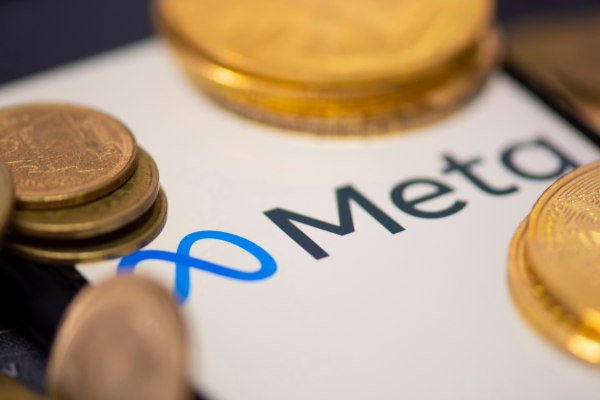What are the implications for the media of the Meta Verified subscription initiative?
Meta, the company that owns Facebook, Instagram and WhatsApp, has always been an innovator. Yet, it has never been afraid to borrow a good idea from someone else too.
This pragmatic approach has led to the launch of features like Stories and Reels arguably inspired by innovations on other platforms, and also facilitated the purchase of rival platforms, in this instance WhatsApp and Instagram.
Even so the company still managed to take the media by surprise on Sunday when it announced the impending launch of Meta Verified.
The move, clearly inspired by Twitter’s recent experiments with Twitter Blue, is in the words of CEO Mark Zuckerberg “about increasing authenticity and security across our services.”
To qualify for the new Meta Verified service, Instagram and Facebook users submit a government-issued ID and in return receive a verification badge for $11.99 a month on the web and $14.99 on iOS and Android mobiles.
The service is being trialled in Australia and New Zealand, but Meta is optimistic it will be rolled out across the globe soon. Meta clearly hopes to avoid some of the issues that followed the launch of the recent Twitter Blue service, which was suspended after it became apparent that many people were purchasing their ticks to impersonate celebrities.
The three questions that come to mind regarding the innovation are;
- Why has Meta done this now?
- What does it hope to achieve?
- What are the long term implications for the media
Why now?
The clues as to why Meta has undertaken the move were dropped in its quarterly earning calls to investors in early February.
Meta endured a tricky 2022 reporting a 41% drop in yearly profit. The latest figures weren’t much cheerier for Zuckerberg and the company’s investors either, showing a 4.5% decrease in fourth-quarter revenue compared to the same period in the previous year.
Ironically the company’s shares rocketed by 23% in one day largely because it surprised analysts who were prepared for a 6.5% revenue drop. The markets have also warmed to the way that Zuckerberg hasn’t been slow to rationalise the company, making around 11,000 staff redundant.
The big hole in Meta’s finances is caused by dwindling advertising revenue. On one level, like everyone else, Meta faces a tough market caused by the economic downturn in which ad spend has dropped significantly.
More worryingly Meta has struggled to recoup lost ground after Apple’s move to add privacy options on iOS made it difficult for companies to track users’ internet activities and ultimately monetise them through ads. Meta estimates that Apple’s rewriting of the ad rule book cost it more than $10 billion in lost revenue in 2022.
So essentially Meta Verified is an attempt by the company to open up a new revenue stream. After all, everyone else appears to be doing it, not just Twitter but also YouTube Premium, Snapchat+, Reddit Premium, and others, so why not Meta…
And the potential upside is huge. Alejandro Rosas García, co-founder and co-CEO of metaverse gaming company Gamium Corp, told Quartz “If just two per cent of [two billion Instagram users] paid $10/month for the verification badge, Meta would make $4.8 billion annually! (five per cent of current revenue).”.
What does Meta hope to achieve?
In the initial blog post Mark Zuckerberg stressed that the innovation was largely driven by security concerns.
“This week we’re starting to roll out Meta Verified — a subscription service that lets you verify your account with a government ID, get a blue badge, get extra impersonation protection against accounts claiming to be you, and get direct access to customer support. This new feature is about increasing authenticity and security across our services.”
Yet industry pundits have suggested that the security message is a smoke screen to disguise where Meta will take the company next. Beyond the authorisation of an account, Meta Verified offers several additional benefits. Its users get exclusive stickers for Stories and Reels, are awarded prioritisation comments and direct access to customer service reps if they require help.
With the subscription model established it is easy to see how Meta might roll out further features to make the offering even more compelling. It could offer access to premium groups, deliver incentives for Facebook marketplace, enable new creativity features on Instagram and a whole lot more.
The creator community on Instagram is perhaps the most obvious group that will recognise the potential of Meta Verified and it is here that the company could offer some really juicy incentives. In the same way that brands who took Facebook advertising seemed to note that the algorithm seemed to work to encourage organic growth so Meta might offer Instagram creators larger audiences and more engagement should they sign up.
In its blog post Meta hints at this suggesting that the new tick will help “up and coming” creators, adding that “subscribers with a smaller following may see a more noticeable impact to their reach”.
What are the implications for the media?
Access to Meta Verified won’t just be limited to individuals. The company revealed “long term, we want to build a subscription offering that’s valuable to everyone, including creators, businesses and our community at large.”
It would not be surprising if Meta delivered a corporate version of Meta Verified targeted at brands and media companies, which offered them new benefits for a monthly fee that will be significantly more than individuals pay.
Although there has been a shift away from relying on Meta channels as a major source of traffic, many media brands still have a significant presence on Facebook and Instagram that delivers profile and eyeballs.
Any win for media companies depends on whether Meta Verified is a sticking plaster to impress the markets, or actually the beginning of a long term shift away from advertising to a partnership/subscription style model.
Industry experts disagree on this. Dan Ives, an analyst at the US financial services firm Wedbush Securities told The Guardian “Meta is seeing clear headwinds on the digital advertising model and this is a low-hanging-fruit way to potentially pick up some incremental revenue.”
Yet others in the industry see the shift as a potential death knell to tracking-based ads that are inspired by user data.
Interestingly Elon Musk, owner of Facebook’s core social media rival Twitter, deemed the company’s move as inevitable.
Meta also faces an existential threat to its ad-based business model from regulators. In January the EU ruled that the company’s legal justification for targeting users with personalised ads broke its data laws. Regulations restricting the way it uses data to target consumers, could be just around the corner. This might encourage Meta and the tech companies’ shift back towards more traditional display advertising models.
If that happens media companies will be better placed to compete for advertising money that would previously have been hoovered up by the social platforms.
Media companies, like everyone else, are adopting a wait-and-see approach to Meta’s subscription shift. Not all of Meta’s recent innovations have been successful. Yet for a company with three billion global users across its core platforms, whichever path it follows is likely to have significant ramifications for the content industry.











